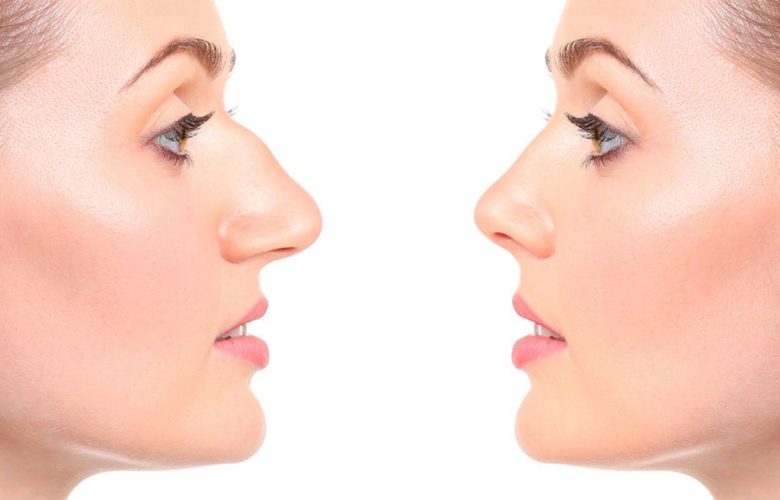Nose surgery is a type of plastic surgery used to change the shape and size of the nose. There are many benefits that come with having this procedure done, but there are also some drawbacks. This article will explain more about the pros and cons of nose surgery so that you can decide if it’s right for you.
Table of Contents
Some people choose nose surgery because of medical problems with breathing.
Some people choose nose surgery to improve the shape and size of their nose, but they do so for medical reasons. Some people have breathing problems due to their noses being in the wrong shape. For example, some people’s noses are blocked due to a bent airway. They may need surgery if they want to breathe better.
Some people get nose surgery because of an injury affecting their nose.
Injuries can also cause noticeable damage to the structure and appearance of your nose if they aren’t treated quickly enough—for example, if an accident leaves you with a broken nose that requires surgical repair before it heals properly.
In such cases, plastic surgeons may recommend cosmetic procedures such as rhinoplasty (nose reshaping) after healing is complete so that your new shape looks as symmetrical as possible without compromising its function in any way—and this isn’t always easy!
The surgery is done in a hospital or doctor’s office under general anesthesia.
The surgery is done in an operating room, often with other procedures being performed at the same time. The surgeon will make an incision inside your nose and remove any infected tissue that has not already been removed by your doctor. A splint will be placed in the nose to keep the area from closing up too soon, and a bandage may be applied over it.
If you have anesthesia, you will receive medication through an intravenous line (IV). The type of anesthesia used depends on several factors, such as how much time is needed to perform the surgery and what kind of work needs to be done inside your nose. In some cases, it’s possible for patients to have sedation without general anesthesia if they are very nervous about having something put down their throats or into their veins.
The surgery takes from 1-3 hours to complete.
Nose surgery takes from 1 to 3 hours, with longer procedures being more common in patients who have undergone a more complicated procedure. The surgery is usually performed under general anesthesia at the hospital or an outpatient surgical centre. In some cases, it can be done in your doctor’s office under local anesthesia.
There are many different techniques for nose reshaping that your surgeon will recommend, depending on the needs of your nose and face. The most common methods involve removing tissue from the inside of the nostrils so that they’re smaller and/or straighter, correcting structural defects with grafts taken from other parts of your body (like ribs), adding artificial materials like silicone implants or cartilage from cadavers (sometimes called “bio-sculpting”), moulding new bone into place around existing structures using screws or pins made out of titanium alloy metal alloys like stainless steel.
You’ll have a cast on your nose for the first week or two after the surgery
After the surgery, you’ll have a cast on your nose for the first week or two. You’ll need to take pain medication for a few days after surgery. You may also need to take antibiotics before and after surgery. Your doctor will give you specific instructions on what to do before and after the procedure, including taking any prescribed medications as directed and following their guidelines for dressing changes and care during recovery time.
You’ll be advised to avoid strenuous activity for several weeks.
After surgery, you’ll be advised to avoid strenuous activity for several weeks. That means no contact sports and no heavy lifting. It also means avoiding strenuous exercise and straining your neck or back by bending over for long periods of time or bending at the waist for long periods of time. You should also avoid bending at the waist while twisting in either direction.
If your nose job is done through a minimally invasive procedure, there’s less swelling and bruising than with traditional open rhinoplasty surgery. As a result, most patients can return home right after their procedures are completed instead of spending an additional night in the hospital as is necessary with open rhinoplasty surgery due to its greater risk of complications such as bleeding.
You may have some drainage from your nose in the first few days after surgery.
You may have some drainage from your nose in the first few days after surgery. This is normal, and it’s okay to feel some pressure in your nose as it heals. If you notice excessive or persistent drainage, contact your doctor immediately.
It can take 10 weeks or longer for all swelling to go down and final results to be apparent.
- You can expect it to take 10 weeks or longer for all swelling to go down. While many people can see their final results right away, others find that the nose will continue to look swollen for several months after surgery.
- The results will be permanent. If you’re considering rhinoplasty because you want your nose changed as a temporary fix, this is probably not a good option. The changes made during rhinoplasty won’t fade over time, but they do get better with time and healing.
- The results may not be as perfect for older people. As we age, our skin loses elasticity: think about how your face has changed since high school compared with now! That same loss in elasticity can make it more difficult for surgeons to achieve an ideal reshaping of our features.

